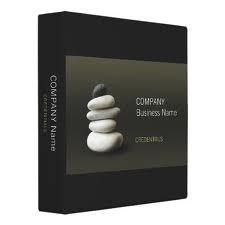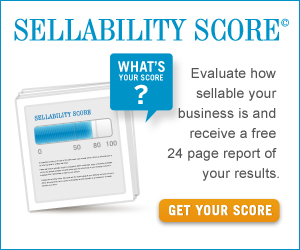 Like many Canadians approaching retirement, you probably have an RRSP that you have been contributing to and managing for years. However, that magical date where you turn 71 and have to convert your RRSP to a RRIF is quickly approaching. Now you need to know more about Registered Retirement Income Fund (RRIF) strategies as opposed to savings strategies that have been directing the management of your Registered Retirement Savings Plan (RRSP).
Like many Canadians approaching retirement, you probably have an RRSP that you have been contributing to and managing for years. However, that magical date where you turn 71 and have to convert your RRSP to a RRIF is quickly approaching. Now you need to know more about Registered Retirement Income Fund (RRIF) strategies as opposed to savings strategies that have been directing the management of your Registered Retirement Savings Plan (RRSP).
Here is what you need to know so that you can take full advantage of a RRIF?
5 RRIF Strategies For Retirees
1. Proper RRIF Wealth Accumulation Strategies
Your investment plan doesn’t need to change drastically just because you are converting your RRSP to a RRIF. But, there is one critical trait that all of the investments in your RRIF need to share to protect you from a negative experience – accessability.
I’ll get into the rules pertaining to RRIFs in a minute but always keep in mind that you will need to make sure that all of the investments in your RRIF are easily converted to cash if you want to use the RRIF withdrawal as a retirement income.
Investing in investment solutions that are somewhat illiquid or carry redemption penalties or that can attract tax-clawbacks are investment you will want to avoid in your RRIF.
Here are some examples of investments to avoid in your RRIF:
- Labour Sponsoured Investment Funds – a redemption from these types of funds prior to the claw-back period for the tax credits will attract a very nasty tax bill.
- Private Equity – this asset class is a lot less liquid and therefore if you need income from your RRIF and can’t sell your shares of private equity, you may be strapped for cash.
- Deferred Sales Charge (DSC) Mutual Funds – if you’ve amassed over $100,000 in liquid wealth and you are still investing in DSC mutual funds, you need to reconsider your investment plan. These investments carry with them steep redemption fees and if you are required to redeem out of these funds to meet your cash requirements, you will be forced to incur this steep penalty fee.
2. What are the rules around converting to a RRIF?
As you approach retirement, it is important to know the rules surrounding the conversion of an RRSP to a RRIF.
In essence, the rules state that you will need to convert your RRSP to a RRIF by December 31st of the year in which you turn 71.
So, what this entails is completeing and signing a new application form with the company who you will be opening up the RRIF with (in most cases it’s the same company who you hold your RRSP with) to open up a RRIF account and then preparing and signing a Transfer Authorization For Registered Investments Form to transfer your RRSP to your RRIF either “in kind” or “in cash”. In Kind transfers are simply the transfer of your portfolio “as is” and an in cash transfer is as it suggests, a transfer of the value of the RRSP portfolio in cash.
These two forms are required because they will allow you to transfer the funds from your RRSP to your RRIF on a tax-sheltered basis. NOTE: If you redeem the funds from your RRSP expecting to be able to then deposit them into a RRIF, you will be taxed on the RRSP withdrawal and will not be able to contribute to the RRIF because new contributions are not allowed to RRIFs.
This takes care of the transfer of your RRSP to your RRIF but you haven’t yet received your first payment. So, on the RRIF Application you will indicated how and when you would like to receive your first payment.
The rules state that a minimum amount of income needs to be withdrawn and de-registered from your RRIF each year. This minimum amount (known as a RRIF Minimum) is calculated each year by the RRIF administrator.
If your goal is to defer the income from coming out of your RRIF for as long as possible then here is what you can do.
- Convert your RRSP to a RRIF by December 31st of the year you turn 71.
- Request an annual withdrawal from your RRIF for your RRIF Minimum.
- Request your annual withdrawal be paid to you in December of the first year you need to make your withdrawal (i.e. the next year). This will allow you to receive your first withdrawal at the end of the year you turn 72 – a full extra year of tax-sheltered growth.
- If your spouse is younger than you, elect to have the RRIF Minimum amount calculated based on their age which in turn will reduce the amount that is required to be withdrawn.
 3. What are the best investment practices to investing your RRIF?
3. What are the best investment practices to investing your RRIF?
I touched on it briefly earlier in the post but in general, your investment plan does not need to change very much when you convert to a RRIF from the plan you were following in your RRSP.
Think about it this way. What is the most appropriate investment profile for an investor who has a 15 – 25 year time horizon. it’s probably not too far off of the investment risk profile you are currently using in your RRSP.
But, here are some important things to consider:
- Are you maximizing your plans “tax efficiency”? Often times people have more than one registered plan (eg: Spousal RRSP, Locked-In RRSP, Regular RRSP, etc…). Having multiple plans can make it more challenging to manage as each plan is seperate from one another. Add to the proplem the fact that you may also have non-registered accounts that are not tax-sheltered and you have the potential for creating a dogs breakfast of a portfolio.
- Take a wholeistic approach to the management of all of your plans to ensure tax efficiency. By determining the overall asset mix for your overall plan, you can place tax innefficient investments (bonds and GIC’s) in your registered accounts and tax efficient investments (dividend producing or capital gain generating securities) in your non-registered accounts. That way when a dividend or capital gain is realized in your portfolio, you receive the tax efficiency that these investments offer and when an interest payment is made from the fixed income side of your portfolio (i.e. bonds and GICs) this innefficient form of income is tax sheltered within the plan.
- Finding investment solutions that truly allow you to manage your overall plan from this high level can often times be difficult. Retail mutual funds often times don’t allow for the level of tax efficiency needed to obtain a high level of tax savings.
 4. How should you schedule your RRIF withdrawal?
4. How should you schedule your RRIF withdrawal?
There is a lot of debate as to whether you should take a monthly withdrawal, quarterly withdrawal, semi-annual withdrawal or annual withdrawal from your RRIF. And, as in most financial planning strategies, the answer lies in the term – it depends.
It depends on your unique circumstances but one simple over-riding rule tends to apply in this situation.
The longer the funds stay in the tax-sheltered plan, the more growth you will receive.
My suggestion is to match your withdrawal frequency to your needs. If you need the RRIF payment to be part of your monthly cash flow then set it up for a monthly withdrawal.
If other forms of income are already taking care of your monthly cash flow requirements then set it up as an annual withdrawal and consider (if you really don’t need the funds for cash flow purposes) re-investing the funds into your non-registered investment portfolio (or better yet, into a CRA approved Wealth Protection Plan to gain further tax sheltering on the funds).
 5. RRIF Beneficiaries and Taxes.
5. RRIF Beneficiaries and Taxes.
One of the biggest mistakes people make when they set up their own RRIFs either through a discount brokerage account or through the tellor at their bank is they forget to realize that the beneficiary election that they had on their RRSP will not carry over to the new RRIF. There have been some very heated court cases that illustrate the importance of paying attention to the details – and this detail is important. Make sure you name a beneficiary on your RRIF.
Here is a listing of the types of beneficiaries you can list on your RRIF and their accompanying tax treatment:
- Spouse: Tax free rollover.
- Child: Balance of the RRIF is included in the annuitants final years tax return and then tax is paid on this as if it were income for the year.
- Relative: Balance of the RRIF is included in the annuitants final years tax return and then tax is paid on this as if it were income for the year.
- Charity: Balance of the RRIF is included in the annuitants final years tax return and then offset by a charitable receipt little to no tax is paid on the balance of the account.
Hopefully this post has taken the mystery out of Registered Retirement Income Funds.
 IN THIS EPISODE OF THE KEY TO RETIREMENT™ PODCAST…
IN THIS EPISODE OF THE KEY TO RETIREMENT™ PODCAST…


 Like many Canadians approaching retirement, you probably have an RRSP that you have been contributing to and managing for years. However, that magical date where you turn 71 and have to convert your RRSP to a RRIF is quickly approaching. Now you need to know more about Registered Retirement
Like many Canadians approaching retirement, you probably have an RRSP that you have been contributing to and managing for years. However, that magical date where you turn 71 and have to convert your RRSP to a RRIF is quickly approaching. Now you need to know more about Registered Retirement  3. What are the best investment practices to investing your RRIF?
3. What are the best investment practices to investing your RRIF? 4. How should you schedule your RRIF withdrawal?
4. How should you schedule your RRIF withdrawal? 5. RRIF Beneficiaries and Taxes.
5. RRIF Beneficiaries and Taxes. In this video, I speak with Mike Flux, VP Connor, Clark & Lunn Private Capital to get an update on the Alternative Asset Classes they offer (Commercial Real Estate, Infrastructure and Private Equity).
In this video, I speak with Mike Flux, VP Connor, Clark & Lunn Private Capital to get an update on the Alternative Asset Classes they offer (Commercial Real Estate, Infrastructure and Private Equity). Does Your Business Have Curb Appeal?
Does Your Business Have Curb Appeal? Perhaps, like many other business owners, you started your business from scratch with one or two employees and now you have 20 people working for you. But do you have the appropriate HR infrastructure in place for that size of a company? Perhaps you even take pride in your informal management style, but it can prove to be a liability when it comes time to sell.
Perhaps, like many other business owners, you started your business from scratch with one or two employees and now you have 20 people working for you. But do you have the appropriate HR infrastructure in place for that size of a company? Perhaps you even take pride in your informal management style, but it can prove to be a liability when it comes time to sell. When you go to buy a house, it will give you confidence if the owner has the instruction manuals for the appliances, information on where they were purchased, and who to call if one of them breaks down.
When you go to buy a house, it will give you confidence if the owner has the instruction manuals for the appliances, information on where they were purchased, and who to call if one of them breaks down. Intangibles for house buying might include:
Intangibles for house buying might include: Is Now the Time To Sell Your Business?
Is Now the Time To Sell Your Business?





